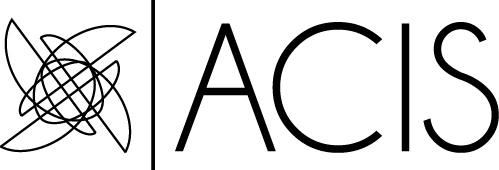
The concept of speculation across space, time, and history was not only the theme of the ACIS 2015 conference, it was also quite apparent in the conference programming itself. While the interdisciplinary nature of the conference is an inherent part of ACIS (even in name), connections across disciplines are not always facilitated easily given the scope of conferences and the breadth of presenter interests. However, several presentations showed how productive these cross-disciplinary conversations can be.
Such border crossing was most evident in the first keynote address given by Moynah Sullivan (U of Ireland, Maynooth) on Emma Donoghue’s Room. Sullivan offered an insightful and provocative analysis of Donoghue’s novel by basing her discussion on matrixial theory. Sullivan used this psychic theory, which draws on multiple fields including feminism, psychoanalysis, and aesthetics, in order to analyze “how we read space.” She offered very detailed close readings that illuminated how the mother can transform a prison into a loving home and pain into a source of good, as mother and child share a border space on multiple registers. Like the matrixial theory she utilizes, which features the idea of “two things at once,” Sullivan’s talk also exploded the conversation beyond the aesthetics of the novel to show how Donoghue’s book not only queers the family romance but also reveals how normalized sexual abuse and rape culture are in modern society, especially Ireland.
Such multivalent work was also present in the panel sessions as well. Seán Kennedy (Saint Mary’s U), Jason Matt Buchanan (Hostos Community College), and Timothy J. White (Xavier U) each discussed the haunting effects of the Celtic Tiger in contemporary Ireland. While each presentation addressed the economic downturn, it did so through different disciplinary lenses, i.e., cultural, aesthetic, and political. Kennedy’s presentation, which assumed a cultural studies lens, introduced the concept of “moral masochism” in Ireland, indicting the Irish for what he deemed a type of passive acceptance regarding the harsh conditions resulting from austerity measures—measures that most negatively affected various minority populations. Buchanan’s presentation picked up where Kennedy’s left off, examining how members of the hegemony were affected by the Celtic Tiger collapse by offering a reading of fictional works that deal with the recession’s effect on traditional notions of masculinity. Buchanan introduced the concept of “man-cession,” which links the land crisis to anxieties over the ways that masculinity is defined and maintained. In particular, the novels Buchanan discussed demonstrated that gentrification is not solely an urban-centered phenomenon and that this “pacification of the land” equates to feminization. He noted that the men in these books become disconnected from their communities in chaotic ways as they struggle in vain to sustain an identity based on a fading idyllic masculinity. White’s presentation, which was written with Theresa Reidy (U College Cork), rounded out the panel by offering a perspective from the realm of political science, using economic and political data to explain what happened in the last ten to fifteen years in Ireland. Their presentation echoed their co-panelists’ by addressing the unfairness of austerity, along with changes of consumption patterns during this time period. They also showed the political implications of the boom and bust and what sort of outlook is on the horizon. As Ireland continues to change and various borders become more fluid, the outlook for Irish Studies must also maintain pace and offer such fresh perspectives that keep the dialogue multi-vocal and productive.
